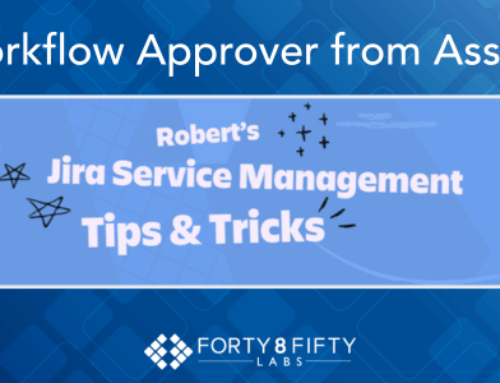IT Service Management (ITSM) is more than just a buzzword. It is a strategic approach that helps organizations efficiently manage and deliver IT services. Its success has reached the ears of executives worldwide as 65% of organizations plan to increase their investments in ITSM technology, and as of now, 73% of organizations have adopted some form of ITSM framework, such as ITIL, COBIT or DevOps. These businesses, ranging in all sizes, are incorporating an ITSM framework understanding that it is key to maintaining a strong IT infrastructure and seamless service delivery.
What is ITSM?
ITSM, or IT Service Management, refers to designing, delivering, managing, and improving an organization’s IT services to its customers or internal teams. At its core, ITSM focuses on aligning IT services with business needs, ensuring IT systems support organizational goals effectively.
Furthermore, the service isn’t about hardware or networks; it’s about delivering technology as a service. This can include service desk management, incident management, change management, and problem management, among others. The goal is to improve service delivery, minimize downtime, and create a better user experience through standardized processes and continuous improvement.
Key components of ITSM include:
- Service Request Management: A structured process for handling routine customer requests, such as application access, software updates, or hardware upgrades. Automation and self-service options improve efficiency and customer satisfaction.
- Knowledge Management: Creating, sharing, and managing company knowledge to ensure information is used effectively across the organization, helping achieve business objectives.
- IT Asset Management (ITAM): Ensures that IT assets are tracked, deployed, maintained, and properly disposed of, ensuring assets are fully utilized and aligned with company needs.
- Incident Management: A rapid-response process for addressing unplanned service disruptions, ensuring business operations are quickly restored to minimize downtime.
- Problem Management: Focuses on identifying the root causes of incidents and preventing future occurrences, aiming to improve system reliability over time.
- Change Management: A standardized approach to managing changes in IT infrastructure, ensuring smooth rollouts of updates or fixes while minimizing risks and service disruptions.
Why is ITSM important?
ITSM not only benefits your IT team but can also enhance the efficiency and productivity of your entire organization. By adopting a structured approach to service management, ITSM aligns IT services with business objectives, ensuring that delivery is standardized and optimized based on budgets, resources, and desired outcomes. This approach reduces costs, minimizes risks, and ultimately leads to a better customer experience.
Some of the most common benefits of ITSM include:
- Aligning IT teams with business priorities: ITSM ensures that IT teams focus on what matters most by tracking performance through success metrics.
- Enabling cross-team collaboration: ITSM facilitates better communication and cooperation across different departments.
- Streamlining project management: By bringing IT and development teams together, ITSM enhances project management efficiency and ensures alignment.
- Empowering IT teams to improve continuously: ITSM fosters a culture of knowledge sharing and continuous improvement, allowing teams to refine processes over time.
- Improving request coordination: With ITSM, service requests are managed more efficiently, leading to faster response times and better service delivery.
- Promoting customer-centricity: ITSM helps deliver a more customer-focused experience through self-service tools and optimized processes such as chatbots.
- Responding quickly to major incidents and preventing future ones: ITSM enables quicker response times and more proactive incident management, reducing the impact of service disruptions.
These benefits not only reduce costs but also improve service quality, enhance employee engagement, and boost customer satisfaction, making ITSM a vital component of a well-run business.
Selecting Your ITSM Provider
ITSM software should support IT teams in alignment with business needs and take a strategic approach to change, transformation, and growth. Businesses will find various ITSM solutions on the market, from standalone applications to platform services, the key is finding the right fit the first time. From our experience, key pieces to look for are:
- Flexible and Scalable: At Forty8FiftyLabs, we have heard that traditional ITSM systems and tools can often be difficult to customize and scale. Finding an agile, customizable solution from the beginning will save you headaches down the road.
- Offers a Comprehensive Service: Frequently, modular tools work great in a pinch but create barriers and silo end users down the line. We advise taking the time to work with a comprehensive provider who can recognize potential silos and customize your tools to avoid them all together.
- Values Continuous Learning: Your provider should communicate ongoing learning as a key value with their internal personnel and provided system or framework. Using a “copy and paste” method never works for personnel and systems alike.
- Empowers Cross Communication: Although it sounds like a given, not all providers are made equal when it comes to communication channels. The best ITSM software enhances cross-team collaboration, empowers end-users, and automates routine tasks, allowing everyone to concentrate on what truly matters.
- Provides Data-Driven Insights: Your provider must provide reporting and analytics tools. These insights help identify trends in service performance, user satisfaction, and potential areas for improvement. Data-driven decisions are essential for continual improvement in service quality.
- Guided by ITIL Framework: As an industry standard, ensure your ITSM provider follows the IT Infrastructure Library (ITIL) framework. ITIL is a set of best practices for ITSM that guides the development and delivery of IT services in alignment with business objectives. These providers will likely offer scalable, repeatable, and high-quality services.
ITSM now plays a crucial role in modernizing organizations. IT teams must evolve from support roles to key drivers of business value and differentiation. Adopting ITSM approaches that emphasize collaboration, ease of use, and faster value delivery can significantly enhance your operations internally and improve your bottom line.
If you are considering ITSM, no one’s offerings can compete with Atlassian’s solutions. As partners for over six years, we have seen how their platform not only covers essential ITSM best practices but also offers comprehensive custom service for streamlined implementation. Integrating collaborative practices and focusing on user-friendliness, Atlassian and Forty8Fifty Labs can help your IT teams deliver value more efficiently. High-performance teams need the power to collaborate, remediate and engage with requests at business velocity. Let us move your business forward. Contact us today.
Related Posts:
Global, Multi-Channel Food Service Company Unites ITSM for Seven Brands with Jira Service Management






